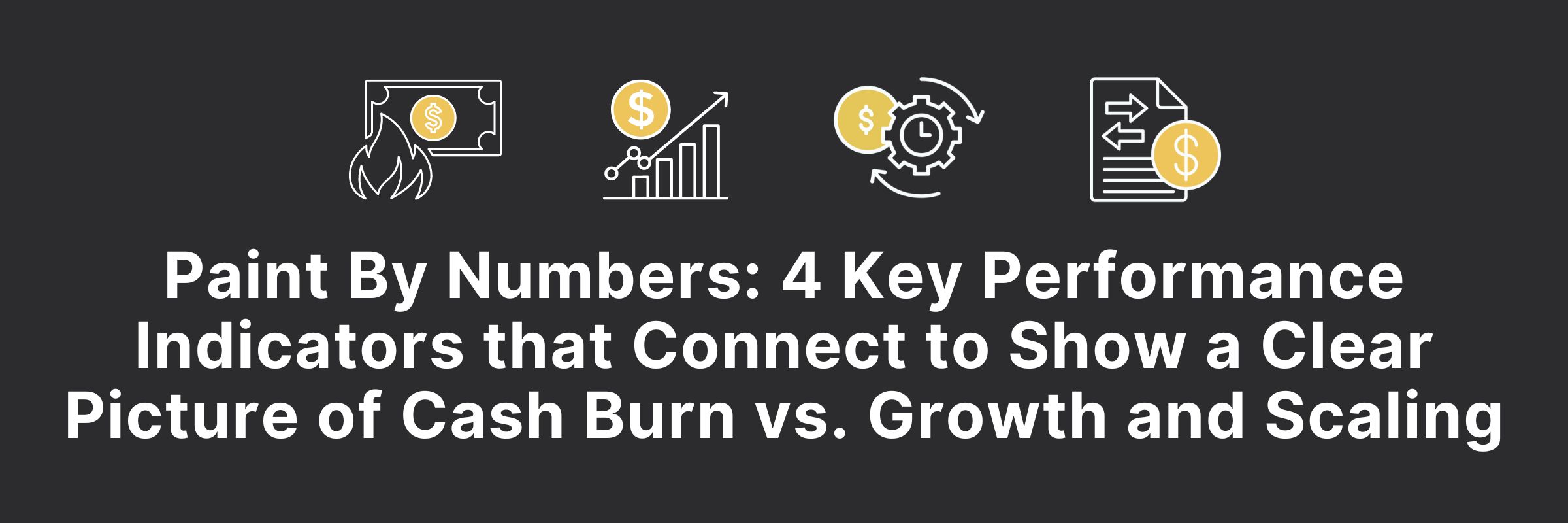
Many investors are unsure of portfolio companies’ future cash positions because they haven’t agreed with founders or executives on key performance indicators. In fact, all too frequently, investors, venture-backed capitalists and portfolio companies don’t even share a dashboard or are not considering the right numbers.
These four key performance indicators, when considered together, show a startup’s true potential for growth and scaling:
1. Net cash burn.
Rather than loosely basing cash burn on fluctuations of cash in the bank, a common but inaccurate approach, the key question investors can ask founders is, “Can you walk me through how you got to that calculation?” This will open the conversation to how best to measure cash burn using revenue recognition, or accrual accounting that stipulates when and how the business “recognizes” or records revenue.
2. Revenue growth rate.
A particular period’s revenue on the income statement divided by last period’s revenue indicates basic revenue growth rate. More specifically, investors and founders want to consider monthly and annual recurring revenue. Be sure the company accounts for set up fees or other non-recurring revenue embedded in total revenue. Failure to track drill-down metrics like those can pollute calculations, pure MRR and ARR data can reveal what investors most want to know: that the revenue growth rate is outpacing the net cash burn rate over time. Total growth rate is predicated not just in revenue, but also in cost of goods sold and in operating expenses. Consider contribution margin as well, or how fast revenue is growing in relation to human capital growth, including recruitment costs and salary loads.
3. Average sales cycle.
Again, cash in the bank alone can give a false positive indicator of financial performance. Instead, keep a close eye on length of time for the average sale to move from first contact to signature. We all know the scenario: the company is extended on equity and debt, and money in the bank is dwindling. But after a long sales cycle, the company wins a millions-dollar contract for a year’s worth of work.
4. Accounts receivable turnover.
Investors and founders need clarity on collections. Many small startup companies in effect fund their much larger clients because of long terms. If a company has high demands on its working capital, then growth is limited by the capital raised. This is where the picture becomes crystal clear: clarity on vendor and supplier terms inform accounts receivable turnover, which feed into working capital, which feed into cash burn data. It is all connected.
In the paint-by-numbers game, the key is the numbers need to be accurate at each point: accurate cash burn, accurate revenue growth rate, accurate average sales cycle and accurate accounts receivable calculations add up to an accurate full picture. With that in hand, investor and founder can align and make observations based on the relationship between the KPIs. It is that relationship, how the data connects, that tells the true story. The true story may be invigorating or unnerving, but either way, both investor and founder will be working toward shared goals in reality rather than in fantasy.



